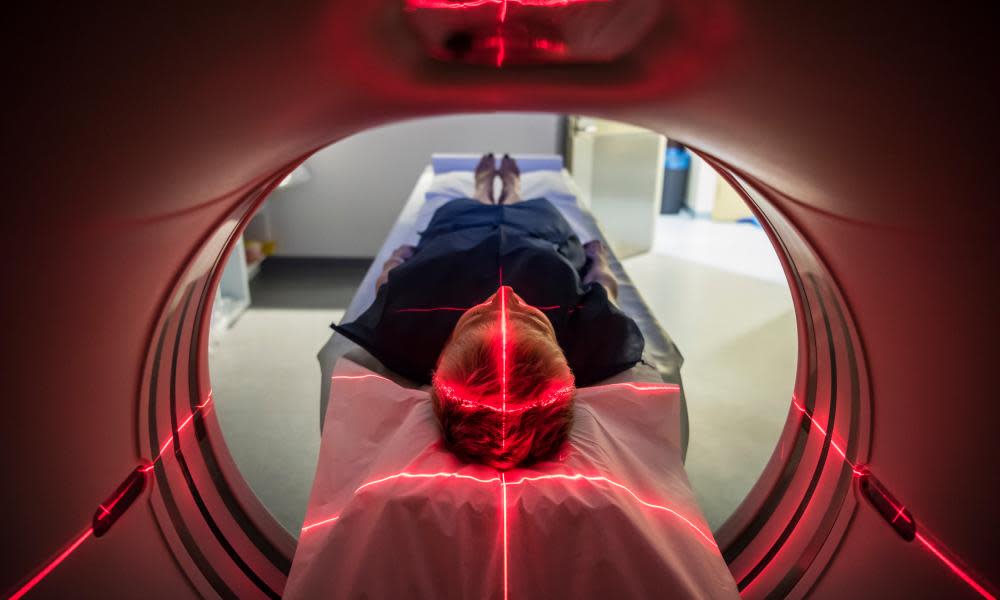Talking about death isn’t easy, but doctors have to get better

We are at my mother’s bedside and I’m pretty sure she’s dying. The doctor is shining a light into her eyes and rubbing her chest. The hospital curtains are closed and my children are crying. My mother is 94 and before she had a stroke and broke her hip three days ago she was in pretty good shape. But everyone has to go sometime. Although apparently not on the ward of a London teaching hospital. “We’re going to do another CT scan,” says a junior doctor. “Because she’s really gone off.”
My practise of medicine may be rusty but this is both cruel (her hip is painful) and a waste of time. I argue with the medical registrar (who is too busy to talk so we fight through the junior doctor) to keep mum from the indignity of another intervention. I win by sounding like a heartless bitch who doesn’t want her mum to have a test (that wouldn’t have changed her management). The next day my mother is sitting out of bed eating yoghurt.
So please, before she “goes off” again, could the doctors so desperate to keep testing and treating her read Talking About Dying, the excellent report from the Royal College of Physicians. Published last week, it acknowledges that doctors (especially in hospitals) struggle to talk to patients and relatives about dying. So often they just don’t. This is unfortunate because one in three adults acutely admitted to hospital and 80% of residents of care homes are in their last year of life. And many of them or their relatives want to know that.
Not sharing the spoiler alert that “no one gets out of here alive” is one thing – but doctors and other healthcare professionals have a duty of care to their patients. The report warns that if patients aren’t identified as being near the end of life, they are more likely to get “unnecessary, aggressive” treatment, and die somewhere that isn’t their first choice. And to be clear on the terms, “end of life” doesn’t mean “within the next two weeks”. The General Medical Council defines it as any patient who is likely to die within the next 12 months.
There is evidence that these patients get better, more joined-up care if they are identified early and put on the GP palliative care register – yet only a quarter of eligible people make it on to the system. Those with heart failure, chronic obstructive airway disease, frailty and dementia are less likely to be identified. Healthcare professionals often fail to bring up advance care planning with patients or their relatives – denying them the opportunity to document how aggressively they want to be treated.
So why is it so difficult for doctors to identify and talk to people at the end of life? Doctors worry they can’t accurately spot those who are going to die. They fear they will be pushed for precise prognoses (“will it be two weeks or two months doc?”) when predictions are notoriously difficult. But repeated admissions into hospital, frailty, metastatic cancer and deteriorating long-term heart and lung conditions are strong hints of life-limiting conditions. The RCP report says that doctors believe patients don’t want to discuss death. But often they do. One survey found that more than 77% of people would want to know if they had less than a year to live.
Medical students may have role-played the telling of bad news but it’s a quantifiable leap to being a doctor and discussing a patient’s mortality with them. Junior doctors need to watch senior clinicians discussing death with patients and model their behaviour. Ideally discussions should be sensitive, private (not over bleeps on a busy ward), include feedback from colleagues and be ongoing. Dr Amy Proffitt, consultant in palliative medicine at Barts Health NHS trust in London and executive secretary to the Association For Palliative Medicine of Great Britain and Ireland advises healthcare professionals to start the conversation early. An opener could be, “I am not certain how long you will have, but this is what I know about your condition … what are your thoughts?”
To Proffitt, it is immoral to offer false hope and futile interventions. This can be hard for doctors who want to push for treatment (because they can) and may feel they have failed when a patient dies – but studies show that doctors themselves choose less aggressive treatment towards the end of their lives.
Being honest about what they would want for themselves and their families could help doctors to put quality above quantity of care at the end of life. And I doubt they would choose to put their 94-year-old mother with a painful hip into a CT scanner in the middle of the night.
• Dr Luisa Dillner is a writer and doctor

 Yahoo News
Yahoo News 
